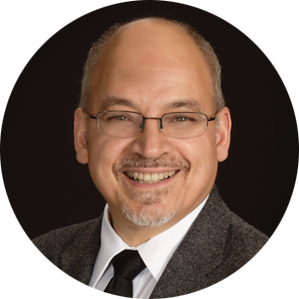
Dr. John C Comisi, DDS, MAGD
I have been a general dentist for almost 35 years and love all it entails. Which dedicated philosopher can we credit for originating the phrase, “If you love what you do, you won’t ‘work’ a day in your life.”? Each day is a different love affair for me in dentistry, with new challenges and opportunities. But there was one arena that always seemed a bit daunting to me: the management of my patients with sleep breathing disorders.
My patients or their significant others would explain to me what they were experiencing, typically telling me there was snoring involved and their bed partner could not tolerate the noise they were making every night. When I would go on campouts with my son’s Boy Scout troop there were always one or two other adults making a “racket” all night long with their snoring, so no one in camp could get any good sleep.
I did some reading on the subject and began to consider creating “snoring” devices to help these patients. I tried all kinds of potential solutions. Some seemed to work, others did not. In fact, some of them probably were causing more problems than solutions. You see, I always understood the noise made from snoring was caused by the tongue blocking the back of the throat and that, like CPR, if we moved the lower jaw as far forward as possible, we’d open the airway and stop the noise. Well, I couldn’t be more wrong. All it was doing was causing jaw problems and causing patients’ lower teeth to feel like they were being pushed out of the mouth. I tried to convince myself I could find a solution by perhaps splinting the teeth, using a soft guard to cushion the teeth, and other things to solve the problem. Nothing worked. I was failing my patients and myself.
My wife Karen constantly urged me to take further training on this subject, but I always put it off because I had other priorities. Then she scheduled a course for me, without me knowing it, and we were suddenly off to Atlanta, GA to take a weekend educational program. I begrudgingly went, figuring it wouldn’t be of much help. But as the weekend progressed, my eyes opened. I was looking at the subject so wrong! I was trying to stop my patients from snoring, but I really needed to help them breathe!
I was looking at the subject so wrong! I was trying to stop my patients from snoring, but I really needed to help them breathe!
In South Carolina, where I now live and teach, the state motto is: “While I breathe, I hope”. At this course I realized I needed to work in concert with my patients’ primary care physicians and the pulmonologists in my area to help my patients. This is not a single entity solution. First, the patient must be diagnosed with some form of sleep breathing disorder, then with that diagnosis, and the proper training and technology, I could finally really help my patients. This team approach made the day-to-day practice of sleep medicine so much more interesting and satisfying. I, along with my medical colleagues, were making a difference for our patients with my creation of effective oral appliances that could actually open the airway and take patients with even severe obstructive sleep apnea to the point of almost normal, unobstructed, fully restful, and beneficial sleep. The first time one of my patients came in wearing his newly created oral appliance and told me for the first time in 20 years he dreamt, it was a HUGE day for me. His eyes were wide open with excitement and joy. He told me it was amazing to have a really restful sleep for the first time in so very long. As the weeks progressed with our follow ups, he continued to tell us his energy level was increasing and he felt better than he had in a very long time. About three months after the delivery of his oral appliance he had a follow-up hospital sleep study and the results were exciting for the patient and his physician. Through the technology we use (EccoVision Pharyngometry and Rhinometry) we improved him from severe obstructive sleep apnea to a diagnosis of very mild to nonexistent apnea.
Since that first case, there have been many others who have benefited from our care, and countless more to come. My greatest rewards are from the gratitude my patients show me for improving their quality of life. Saving lives and having income benefits cannot be matched anywhere else in dentistry.
I urge you to consider looking further into bringing Sleep Medicine into your day-to-day work. I believe it will make a difference in your practice life, and the lives of so many people who are already part of your practice and are unaware of this life-threatening condition. You can make a difference in their lives and they will see you as their hero. Take the next step.
Written by John C. Comisi, DDS, MAGD
Republished from The Sleep Magazine, permission of Sleep Group Solutions.
Category: Equipment
Back to Articles